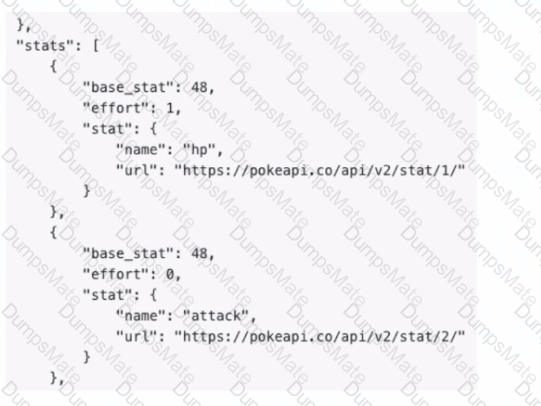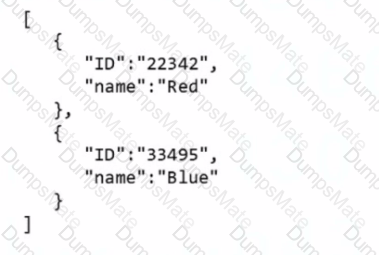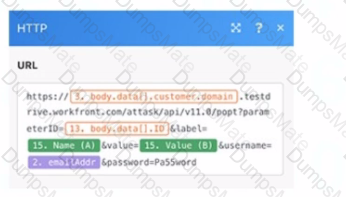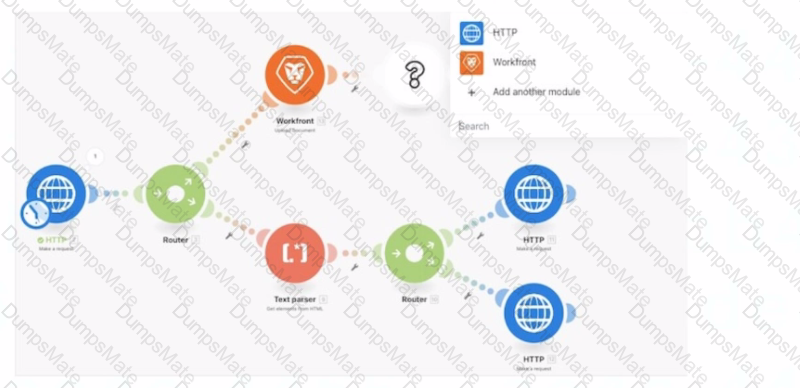Understanding the Image and Context:
The image provided represents anHTTP modulein Workfront Fusion with a URL that dynamically references various data points (e.g., parameterID, customer.domain, emailAddr).
The structure of the URL indicates a call to the Workfront API (/api/v1.0/), using parameters to pass dynamic data such as parameterID, username, and password.
Why Option A ("Custom API Call") is Correct:
The HTTP module shown in the image is acustom API callbecause it interacts with Workfront's API endpoints by passing dynamic parameters through the URL.
Custom API Callmodules allow users to manually configure requests to endpoints in cases where no predefined Workfront Fusion module exists for the operation. This is evident in the example, where specific fields like parameterID, customer.domain, and others are manually mapped to the API URL.
Example Use Case: Dynamically creating custom form field options by sending a POST/PUT request to the Workfront API with specific parameters (like label and value) for each environment.
Why the Other Options are Incorrect:
Option B ("Misc Action"): This refers to predefined actions in Workfront Fusion for handling simple tasks. The HTTP module is not categorized under Misc Actions as it involves direct API interaction.
Option C ("Read Related Records"): This module is used to fetch data related to Workfront objects (e.g., related tasks or documents). It doesn’t allow dynamic parameter passing or URL customization as seen here.
Option D ("Search"): The Search module is used for querying Workfront objects based on specific criteria but does not involve making direct API calls or sending HTTP requests with custom parameters.
Steps to Configure a Custom API Call in Workfront Fusion:
Add theHTTP Moduleto your scenario.
Select the appropriate HTTP method (e.g., GET, POST, PUT). In this case, aPOSTorPUTmethod would be used to create or update custom form fields.
Enter the API endpoint in theURLfield, as shown in the image.
Map dynamic values to the parameters by referencing fields from previous modules in the scenario. For instance:
customer.domain: Extracted from prior steps.
parameterID, label, and value: Dynamically passed based on input data.
Authenticate the request using a username and password or an API token.
Test the module to ensure the API call works as expected.
How This Solves the Problem:
By using a Custom API Call (via the HTTP module), the user can dynamically interact with the Workfront API to create or modify custom form field options across multiple customer environments, passing the required parameters programmatically.
















